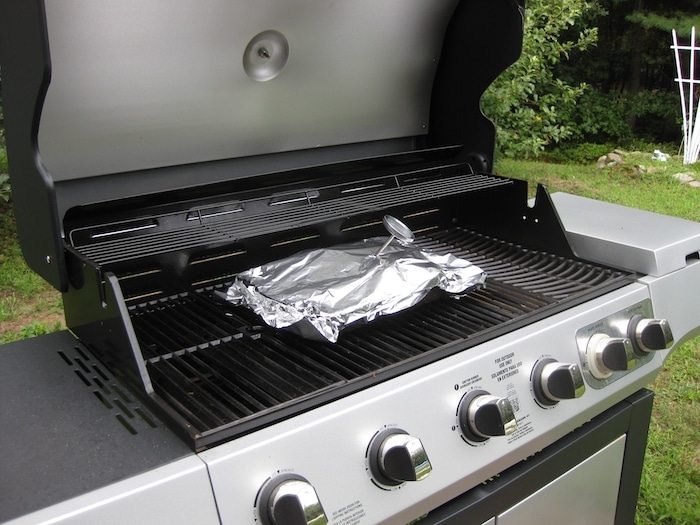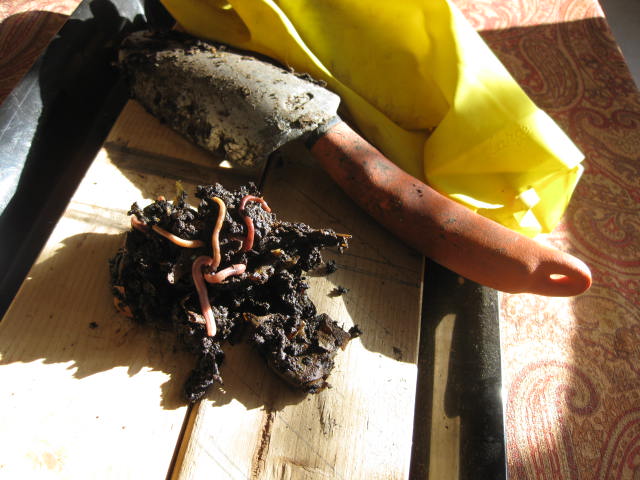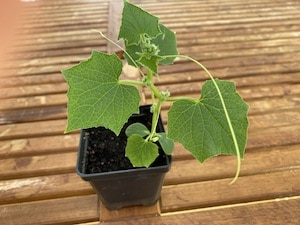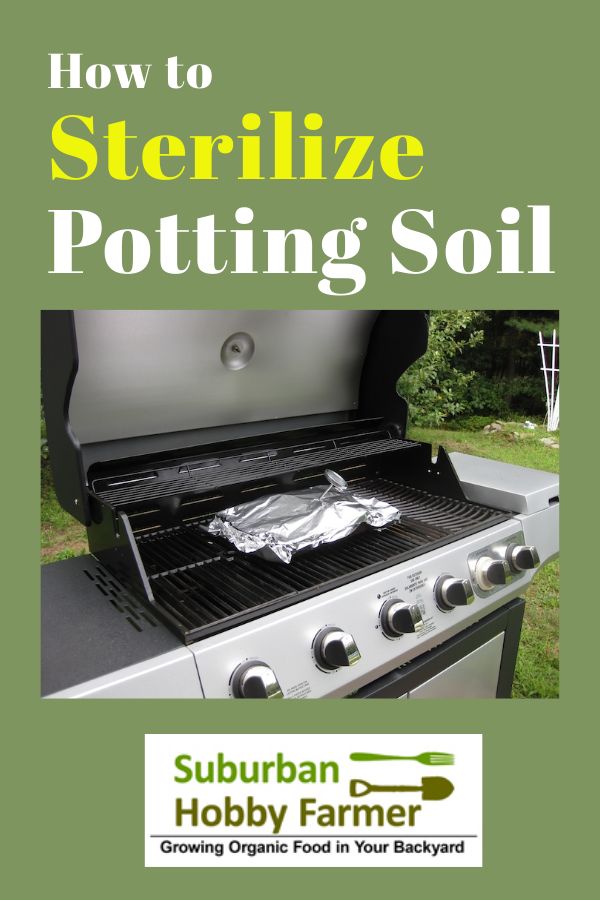Updated: January 30, 2021
If you want to make your own potting soil for house plants, you’ll need to learn how to sterilize it. Otherwise, you’re going to have creepy crawlies (a sophisticated horticultural term), a.k.a. bugs, running around your house.
Some people will tell you that homemade soil for houseplants doesn’t need to be sterile. In fact, once the plants are established, they benefit from the soil microbes that live in unsterilized soil.
And it’s true. You’ll never get the very best possible plants with sterilized soil. But the problem is that creepy crawlies crawl out of unsterilized soil. Unfortunately, you’ll find them in unexpected places in your house. I don’t want that.
So you should compromise and use sterile soil indoors.
Related: Getting Rid of Gnats on Seedlings
Table of Contents
This is a long, detailed article. You can jump to where you want to be by clicking on the different sections below. To come back to this table of contents, just use the back button on your browser.
Let’s take a sec to get the legal words out of the way. This article may contain affiliate links. That means if you click and buy from my partners, I will make a tiny amount of money. This in no way affects my recommendations.

Other reasons to learn how to sterilize potting soil
There also are a couple of other problems with using unsterilized soil indoors. Sometimes it encourages damping off in new seedlings. Some people even sterilize potting soil for plants in their hoop house.
One more reason to sterilize potting soil: weed seeds are much less likely to sprout. This is especially true if you’re using homemade compost.
Sterile soil makes all the above problems less likely.
Sterilizing soil prevents bugs from crawling or flying out of the potting soil and taking up residence in your home.
— Suburban Hobby Farmer
Conventional wisdom says that to sterilize potting soil, you need to heat it to 180 degrees Fahrenheit for 30 minutes.
Most people believe that using an indoor oven for this is a bad idea. The odor from cooking the soil is not something you want in your house.
Plus, running the oven when it’s hot outside doesn’t make much sense if you’re paying for air conditioning.

How to Improve Soil
All the ways I know to improve your soil.
Grilling soil
My solution is to use my gas grill. Outside the smell would quickly pass, and it wouldn’t heat up the house.
Here’s my step-by-step method for how to sterilize potting soil:
Time needed: 2 hours
Sterilizing potting soil is pretty easy if you use a gas grill.
- Line a baking pan with tin foil.
You probably want to use an old pan so you won’t be eating out of a pan that had dirt in it.
- Fill the tin foil with homemade potting mix.
See the potting soil recipe below if you don’t have one you already like.
- Add a little water to the mix.
The object is to keep the soil moist.
- Cover the top of the soil with a second layer of tin foil.
This will keep everything in place and help keep the soil from drying out.
- Insert a meat thermometer.
Place the thermometer through the tin foil into the soil. You want to make sure it doesn’t touch the bottom of the pan because it won’t give you a true reading.
- Heat the soil at 180 degrees for 30 minutes.
Turn the grill on full blast and put the pan on top of the grates. You don’t want the temperature to go too much above 180 degrees Fahrenheit. Turn down the grill as the temperature approaches 180. Keep it as close to 180 as you can manage. If it goes much above 185, you could damage the soil.
That’s it, you’re done. Now you have sterilized potting soil.

Everything I know about Starting Seeds
All my seed starting and seedling growing articles in one place.
My potting soil recipe
When I sterilize soil, it doesn’t seem to smell as much as most others say it would. Maybe that has something to do with the recipe I’m using:
- One-third screened compost
- One-third quality soil
- One-third clean sand
- A little perlite
The potting mix drains well, which is very important for container gardening. At the same time, it seems to hold moisture well, too. I tested it (both sterile and unsterilized versions) with green onions and organic mesclun mix salad.
Both turned out equally well.
How to sterilize potting soil FAQ
Below are the most common questions I get about sterilizing potting soil:
It’s a mix of field soil and soil amendments (e.g., compost, aged manure, peat moss, perlite, sand) where the living organisms have been eliminated usually by heat. These organisms include bugs (and their eggs) and microbes.
You sterilize it to prevent bugs from crawling or flying out of the potting soil and taking up residence in your home. It also prevents weeds from growing in the potting soil.
The best, most natural way to sterilize soil is to heat it to the point where it kills all living things in the mix.
No. A lot of potting soil is for outdoor use. So it is not sterilized. It is usually better for the plants if natural microbes are in the soil. Beneficial microbes help plants digest nutrients.
To sterilize potting soil, you need to heat it to 180 degrees Fahrenheit for 30 minutes. There are also chemical methods that I don’t recommend.
Sterile soil is less likely to (1) cause plant diseases, (2) harbor plant damaging insects and (3) grow weeds. However, sterilization also kills beneficial microbes and may make it more difficult for plants to obtain the nutrients needed.
Indoor potting soil is not sterile unless the manufacturer says it is. But sometimes the manufacturer will take steps to reduce troublesome insects like fungus gnats.
Commercially available potting soil is better for mature plants that need relatively high amounts of nutrients. Consequently, it contains more manure, compost and often fertilizer. Seed starting soil (a.k.a. seed starting mix) is designed for, as the name implies, growing seedlings. It is lighter than potting mix so that new roots and stems can move the soil around. It has more light weight materials like peat moss, coir, vermiculate and perlite. One more important point, seed starting mix may have some fertilizer in it to fuel the young plants. But most has very little. Young seedlings don’t need fertilizer when they start out because they get the nutrients they need from the seed itself.
You will often get bugs flying or crawling around your house. You may also get weeds or mushrooms growing next to your plants. Finally, there’s a better chance that your indoor plants will catch diseases from the soil. But all that being said, your plants may actually do better with non-sterile soil because it may contain beneficial microbes that help with nutrient uptake.
Most of the time, commercial potting soil makers will formulate it for containers, so it will allow water to pass through it more easily. Potting soil also will resist compaction. This is achieved by corse ingredients such as perlite.
Yes it will help. Sterilizing potting soil is one of the best ways to prevent gnats from taking up residence on your indoor plants.
No, potting soil has too many nutrients and is too heavy for young vegetable seedlings. There is a higher chance that seedlings will be affected by dampening off. That said, you can still be successful using potting soil for seedlings. It’s just that seed starting mix is better.
Seed starting mix is a lot lighter than potting soil. This is much better for your new seedlings. Seed starting mix also has less compost and fertilizer, which isn’t needed and could cause dampening off. It’s better to use seed starting mix rather than sterile potting soil.
One way is to make sure that all your seed starting mix and the potting soil you use to transplant the seedlings is sterile. Once you have gnats already, you may want to read how to Get Rid of Gnats on Vegetable Seedlings.
Most of the time, there are not enough gnats on your plants to do damage. But if the infestation is large enough, fungus gnat larvae can feed on the roots of your plants and impact the health of your seedlings.
Related articles that might interest you:
- Which Seed Starting Mix is Best?
- I Shopped for Hoop House Kits. A Review of the Three I Considered
- Soil Block Makers Vs. Paper Pots for Starting Seeds

Suburban Hobby Farmer is a participant in the Amazon Services LLC Associates Program, an affiliate advertising program designed to provide a means for sites to earn advertising fees by advertising and linking to amazon.com.